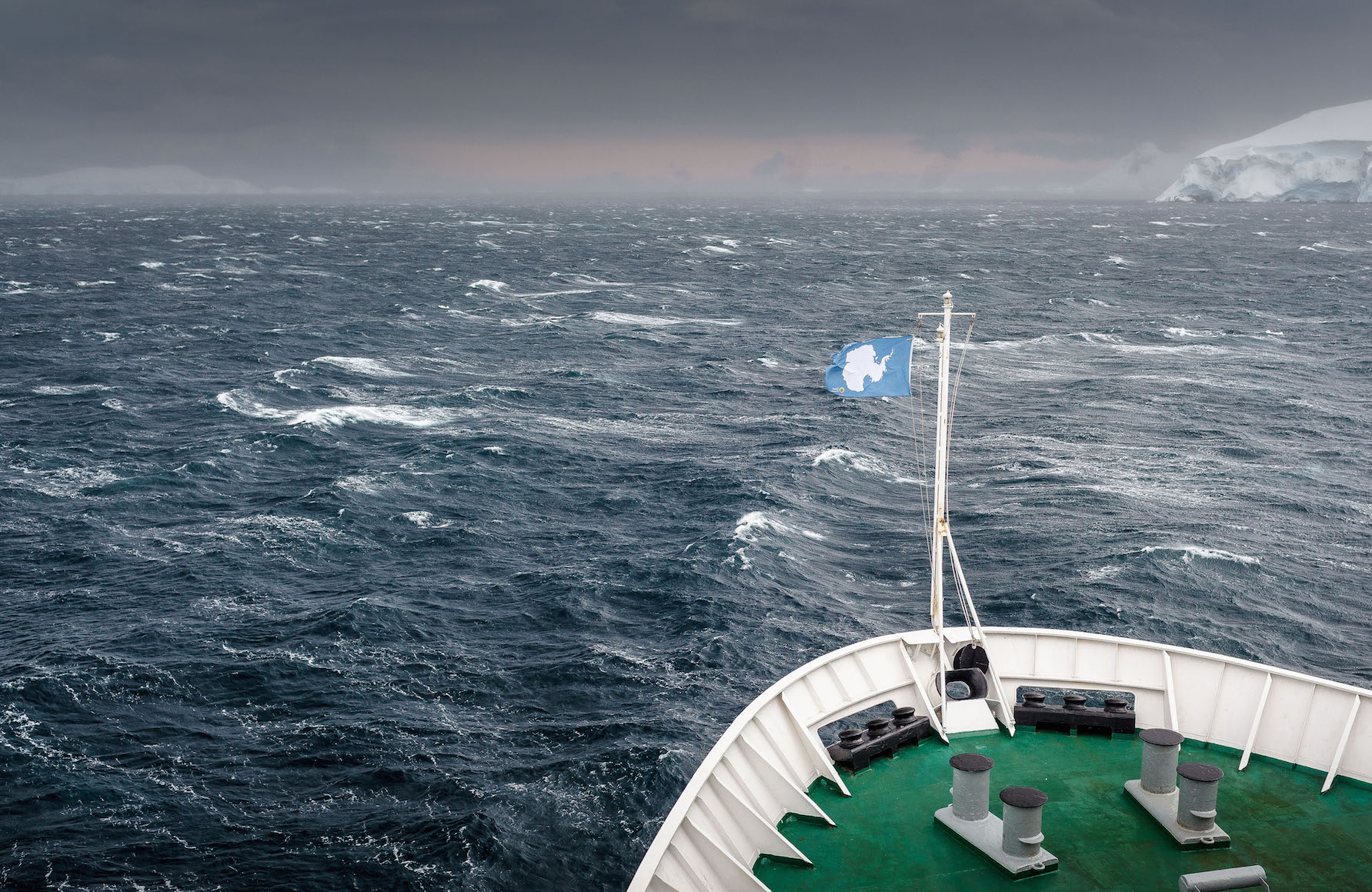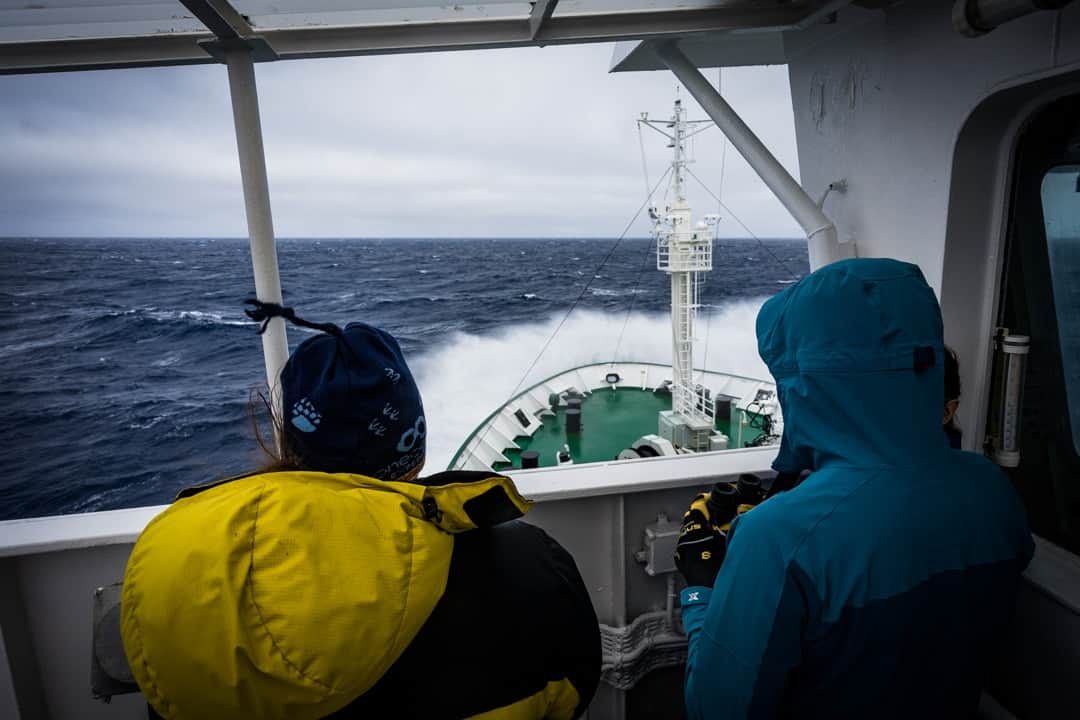Conquer the Drake Passage: Tips for a Smooth Antarctic Crossing

Introduction to the Drake Passage and its Characteristics
If you plan on visiting the great white continent, knowing what you're up against when crossing the Drake Passage is essential. This stretch of water is known for its unpredictable and sometimes treacherous weather conditions. But fear not! With proper planning and preparation, you can still enjoy a smooth and safe journey.
The Drake Passage, named after the English explorer Sir Francis Drake, is the body of water between the southern tip of South America at Cape Horn and the South Shetland Islands of Antarctica. The passage is approximately 800 kilometres wide, with depths ranging from 1,000 to 5,000 meters. The shallow waters, strong currents, and extreme weather patterns make this passage challenging for even the most experienced sailors.
The conditions in the Drake Passage can vary from calm to severe. The area is notorious for forming the Drake Shake, which can be described as a sudden and violent ship motion caused by high waves and strong winds. Temperatures can range from freezing to mild, with frequent storms bringing rain, sleet, and snow.
Why planning for a smooth Antarctic crossing is important
Planning is crucial when crossing the Drake Passage, as it can make a significant difference in the quality of your experience. By choosing a reputable and well-equipped operator, you can ensure that your safety is a top priority. These companies have dedicated staff and advanced technology to help monitor weather forecasts and ensure your journey is as smooth as possible.
It's also important to pack appropriately for your journey, bringing warm, waterproof clothing, sturdy footwear, and any necessary medications. Additionally, staying well-rested and hydrated can help mitigate the effects of motion sickness and ensure that you're in good health for your exploration of Antarctica.
Crossing the Drake Passage is an incredible and unforgettable experience, but it's essential to understand the challenges and plan accordingly for a safe and smooth journey. With proper preparation and an experienced operator, you can confidently embark on this adventure.

Choosing the Right Ship
If you're considering a journey across the Drake Passage, you'll want to choose the right ship to ensure a smooth and enjoyable experience. Here's what you should consider when selecting a vessel.
Selecting the right ship for the Drake Passage crossing
When choosing a ship, you should consider selecting a vessel that fits your needs. A larger vessel may have more amenities, but if you prefer a more intimate experience, a smaller vessel may be a better fit for you. Additionally, consider looking for a ship with an experienced crew with a good reputation and understanding of navigating the Drake Passage to ensure a comfortable and enjoyable journey.
Features of a good ship for a smooth Antarctic crossing
One of the most important features of a good ship for crossing the Drake Passage is its advanced technology for monitoring weather conditions and stabilizing the vessel on high seas. Look for ships with strong engines, stabilizers, and state-of-the-art navigation equipment. You should also watch for ships with lifeboats, life jackets, and medical facilities just in case of an emergency.
Packing for the Voyage
When preparing to embark on your journey through the Drake Passage and to Antarctica, it's essential to pack the right items. Here are some packing tips to keep in mind:
Packing tips for a smooth journey through the Drake Passage
- Pack light and only bring what you need to avoid excess baggage charges on your flight.
- Bring waterproof and windproof outerwear to protect you from the elements.
- Don't forget to pack medications and essentials in your carry-on bag.
- Invest in a good camera or smartphone to capture the breathtaking landscapes on your journey.
Clothing and equipment essentials for Antarctic crossing
| Clothing | Equipment |
|---|---|
| Warm, thermal layers | Sunscreen and lip balm |
| Waterproof boots and socks | Binoculars |
| Hat, scarf, and gloves | Backpack or waterproof bag |
| Sunglasses | Camera or smartphone |
By packing smart and bringing essential items, you can focus on enjoying your journey and creating amazing memories in Antarctica.

Preparing for Seasickness
If you're embarking on a journey across the Drake Passage, preparing for the potential of seasickness is important. However, don't let the fear of seasickness ruin your journey! Here's how you can prevent and treat seasickness during your crossing.
Preventing and treating seasickness during Drake Passage crossing
Selecting the right ship is one of the most effective ways to prevent seasickness. Opt for a larger ship with stabilizers to minimize the rocking sensation, or consider booking a cabin on a lower deck where you'll feel less movement. When on board, keep your eyes on the horizon or a fixed point to help your body adjust to the movement.
If you start to feel seasick, remember to stay hydrated, avoid alcohol and greasy foods, and rest in the ship's cool, fresh-air area. Some people find taking slow, deep breaths or using acupressure bands on their wrists helps alleviate symptoms. Don't hesitate to speak with the ship's doctor or crew if you need help.
Natural remedies and medications
You may also consider natural remedies or medications to prevent or treat seasickness. Ginger, consumed in food or capsule form, is known to effectively reduce motion sickness. Likewise, St. John's Wort can help alleviate nausea. Over-the-counter medications like Dramamine or Bonine can also be useful. Still, it's best to consult your doctor before taking them to ensure they won't interfere with your other medications.
By preparing for the potential of seasickness and taking necessary precautions, you can ensure a smooth and enjoyable journey across the Drake Passage.

Staying Safe in Rough Seas
If you're embarking on a journey across the Drake Passage, it's essential to prioritize your safety. It's crucial to be prepared for emergencies while on a ship and stay safe while navigating rough seas. Here's what you need to know.
Safety precautions for a smooth voyage through Drake Passage
Before setting sail, it's necessary to check the weather conditions and ensure that the ship and crew are well-equipped to handle any challenges effectively. Opt for a larger vessel with stabilizers, lifeboats, and life jackets, and ensure they are in good condition.
During the journey, listen carefully to safety briefings from the crew and familiarize yourself with emergency exits and procedures. Always wear non-slip shoes and appropriate clothing to stay comfortable and secure on deck. Additionally, avoid the temptation to wander the ship alone during rough seas. So, stay seated and hold onto handrails while walking.
Avoiding risks and dealing with emergencies
In case of an emergency, speed is of the essence. Listen carefully to instructions from the crew and follow their lead. Packaging essential items such as medicines, extra clothing, sunscreen, and insect repellents is also advisable. Be sure also to carry your passport, travel insurance, and other important contact information.
If you feel unwell or experience any medical complications while on board, seek assistance from the medical officer immediately. Most ships have medical facilities and personnel who can offer first aid and treatment until the ship reaches port.
By following these safety precautions, staying aware of the risks and dangers of navigating through rough seas, and prioritizing your health and well-being, you can ensure a safe, successful, and enjoyable journey through the Drake Passage.

Enjoying the Journey
Congratulations if you are embarking on an Antarctic adventure through the Drake Passage! While the safety of all passengers should be the top priority, it's also essential to make the most of your time at sea. Here are some tips on how you can enjoy your journey to Antarctica.
Activities and entertainment options during the Antarctic crossing
Luckily, many ships sailing through the Drake Passage offer various activities and entertainment options to keep passengers engaged. You can expect to have:
- Informative lectures and talks by experts on topics such as wildlife, geography, and history
- Documentaries and films featuring Antarctic culture, history, and nature
- Observation decks where you can view open ocean and wildlife
- Workshops on topics like photography and art
- Games and social events such as trivia nights or karaoke
Taking advantage of the time at sea
While ensuring your safety is a top priority, the journey at sea can be a great opportunity to relax. Consider bringing books, music, or speciality items like colouring books or puzzles to occupy yourself during the voyage.
Additionally, mealtimes offer a chance to try new foods and socialize with other passengers. You can make the most of your adventure by enjoying the activities, entertainment, and downtime on the ship.
Arrival in Antarctica
What to expect upon arrival in Antarctica
Upon arriving at the White Continent, you can expect to be surrounded by vast, snowy landscapes and stunning natural beauty. You will likely see various species of birds, seals, and whales along the way as you travel through the icy waters. Once you arrive, you'll be greeted by a team of friendly professionals who will help familiarize you with the area and ensure a safe and enjoyable stay.
Excursions and activities on the continent
Antarctica offers a range of activities, from hiking and kayaking to snowshoeing and wildlife watching. Excursions may include trips to research stations and historical sites or visits to remote locations that few people have ever seen. You can also experience a more intimate connection with the environment through camping on the ice and swimming in the freezing waters. With abundant activities and fascinating sights, your visit to Antarctica will surely be an unforgettable experience.

Returning Home
As you near the end of your incredible Antarctic adventure, it's understandable that you are experiencing mixed emotions. You may feel slightly sad to leave behind the stunning landscapes and unique wildlife but excited to share your experiences with loved ones back home. To make the most of your remaining time and keep the memories of your journey alive, here are some tips to consider.
Preparing to Leave Antarctica and the Drake Passage
Before leaving Antarctica, it's important to take some time to reflect on your adventure. You can organize your photos, write in a journal, or take a moment to appreciate the beauty of your surroundings one last time. When heading back through the Drake Passage, there are several ways to make the journey more comfortable:
- Stay well-hydrated and rest as needed
- Pack any last-minute souvenirs or snacks
- Take advantage of ship activities and entertainment to pass the time
Keeping the Memories of the Journey Alive
Once you've arrived home after your Antarctic adventure, you can continue savouring the memories of your incredible journey. Here are some ideas to help keep your experience fresh in your mind:
- Create a scrapbook or photo album to showcase your favourite moments and memories
- Stay in touch with any new friends or acquaintances you met on the trip
- Host a slideshow or event to share your experiences with others
Summarizing the Tips for a Smooth Drake Passage Crossing
Heading back through the Drake Passage can be challenging, but following the tips above, you can have a much more comfortable journey. Remember to stay hydrated and rest as needed, pack any last-minute souvenirs or snacks and take advantage of ship activities and entertainment to pass the time.
